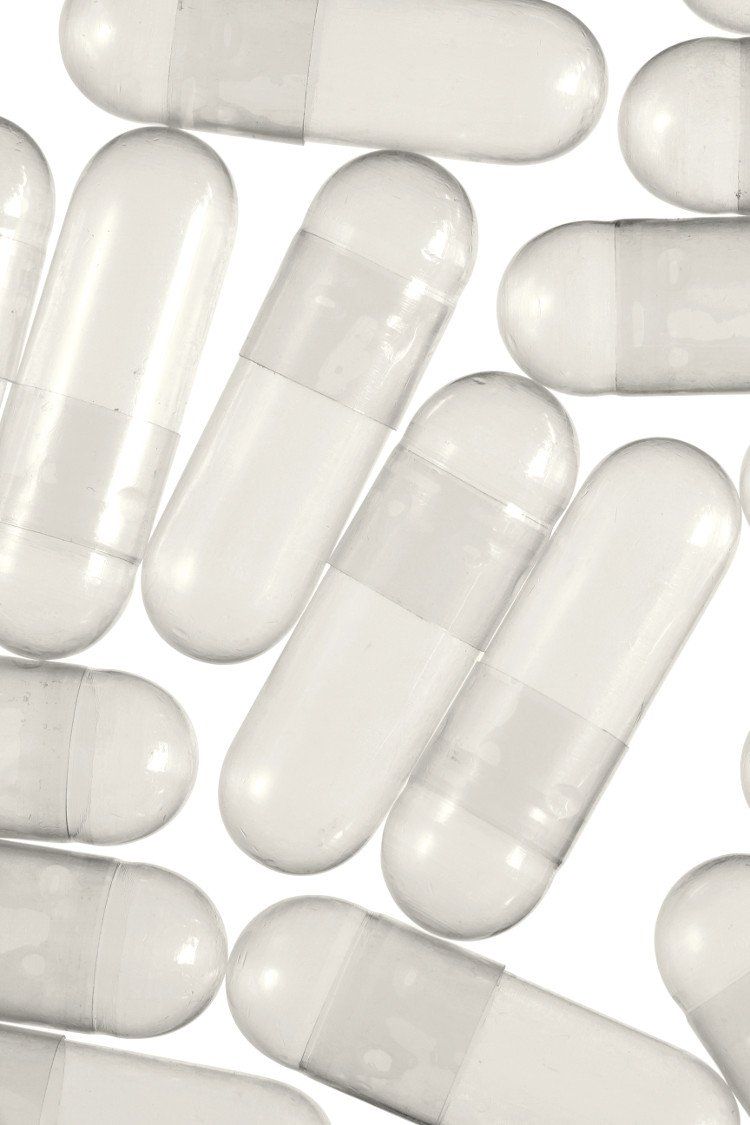Dietary supplement delivery systems: The clean-label effect
Clean-label demands require that all parties, delivery system manufacturers included, work together.
Photo © AdobeStock.com/Winai Tepsuttinun

The clean-label movement has dominated the past decade, with survey after survey showing that dietary supplement shoppers and the industry alike are moving toward “cleaner” products. Why? Consumers today aspire to a healthier lifestyle-from the environment they live in to what they put in their body-and, for reasons of their own, they associate cleaner labels with healthier products.
While the term clean label has no official, universally recognized definition, in context it typically refers to products that use all-natural/non-GMO ingredients, transparent supply chains, and inputs that anyone with an eighth-grade education can pronounce. Clean-label products aim to exclude artificial colors, sweeteners, and preservatives, replacing them with natural ingredients that perform the same function.
“In its simplest form, clean label asks three integral questions: 1) Can the consumer pronounce the name of the ingredients or excipients? 2) Does the consumer know where the ingredient comes from? And 3) Does the consumer feel better knowing what they’re consuming?” says Steve Pierce, president of ingredient supplier Ribus (St. Louis), which touts itself as “The Original Clean-Label Company.”
Clean label sets forth a whole new set of targets for everyone in the supply chain to meet-and often, fulfilling those requirements is a lot harder than it sounds. A clean-label supplement must be, or try to be, clean through and through. This includes both active ingredients and their delivery vehicle. And indeed, more consumers are becoming aware of what goes into making the capsules, powders, and tablets they see on store shelves.
Barri Sigvertsen, global innovation marketing manager for Lonza Consumer Health & Nutrition (Morristown, NJ), points out that clean-label ingredients and delivery systems are “symbiotic.”
“They must work together in order to deliver a truly clean-label solution,” Sigvertsen says. “The delivery system is an integral part of the finished product, and so it makes sense to deliver a clean-label ingredient through a clean-label delivery system. The production requirements and challenges are also typically very much aligned; for both components, it is important to check that the raw material sources, vendors, and practices are clean label–compliant to optimize the output and deliver on consumer demands.”
Verified Portfolios
For delivery system providers, performing to clean-label standards means continually expanding the options for supplement makers. We checked in with a few delivery system providers on their latest developments.
For Lonza, Sigvertsen says, “A major part of delivering clean-label solutions is ensuring that the facilities you operate in also adhere to clean-label requirements. As such, we have worked closely with our customers and suppliers to discover new raw material sources that address this need, and deliver our own processes that meet clean-label expectations.”
One of Lonza’s recent efforts is developing natural, food-based colorants for its Vcaps Plus vegetarian capsules. Says Sigvertsen: “Color has long been an important element of the dietary supplements industry, offering an opportunity for brand owners to differentiate and distinguish their products from the competition. The challenge, however, was that in order to create products with stable, long-lasting color, manufacturers were once left with no other option but to turn to artificial colorants, which did not align with consumer preferences.” Lonza’s naturally sourced colors from foods deliver more robust, stable colors with a more sustained performance than was previously possible, she says.
Capsule supplier ACG (Mumbai, India) has introduced its branded ACGcaps H+, a capsule product line that is made without the use of any gelling agents. “These capsules are manufactured with hydroxypropyl methylcellulose (HPMC) and water,” says Justin Kalafat, scientific business development manager for ACG Capsules. Kalafat says that the clean-label feature adds another benefit claim to the HPMC capsules, which already carried vegetarian/vegan, kosher, halal, and GMO-free claims. Kalafat notes that the clean-label shift is simply the next logical outworking of the GMO-free movement.
Kalafat agrees that dietary supplement companies are actively looking into new options for coloring. White capsules that are free from titanium dioxide are also gaining traction and permit brands to make clean-label claims, he says.
Other companies are also introducing their own clean-label alternatives. Susan Freers, technical service manager for specialty ingredients at Grain Processing Corp. (GPC; Muscatine, IA), says that GPC has been making innovations in its delivery system offerings, including its binders, carriers, and film formers.
“We’ve developed a variety of starting formulations for many markets,” Freers says, including makers of softgels, tablets, and capsules. For instance, she says, “we have a full line of identity-preserved, non-GMO maltodextrins, syrup solids, and starches.” GPC’s clean-label delivery systems are also Non-GMO Project Verified.
Excipients are key delivery system components. Pierce says that Ribus offers a “near complete” line of excipients “that offer clean-label alternatives to the industry standards like magnesium stearate (lubricant), silicon dioxide (flow agent), hydroxypropyl cellulose/HPC (binder), and others.” The company is also introducing a new, natural and organic excipient that absorbs oil-such as vitamin oils, omega-3s, or cannabidiol/CBD, for example-and allows oily material to be used in standard capsules, tablets, gummies, or powders. The gummy market, he adds, is now actively cleaning up labels and looking for cleaner ingredients and excipients.
Pullulan, a vegetable-derived, water-soluble polysaccharide used to make capsules, will continue to play an important role in the clean-label movement for years to come. In the U.S., the Organic Trade Association, as well as other industry advocates, have petitioned USDA and the National Organic Program (NOP) to add pullulan to the National List of Allowed and Prohibited Substances-namely, ingredients that are allowed to be used in products labeled as USDA Organic. The effort to add pullulan to the list is significant, considering that there are no other comparable NOP-approved vegetarian alternatives for producing capsules. The National Organic Standards Board has noted that manufacturers would otherwise be forced to use gelatin, which is included on the National List but which does not meet vegetarian, kosher, or halal needs. In 2019, the board voted to add pullulan to the National List. This move is a boon to capsule producers such as Lonza, which makes its Plantcaps vegetarian capsules from pullulan.
Ribus’s Pierce says, “The recent approval of natural pullulan for use in organic capsules-until the organic version [of pullulan] becomes commercialized-is an indicator of the desire to remove synthetics.”
Relying on Certifications
As mentioned, one problem facing brands and formulators is the fact that there is currently no official, universally accepted definition of clean label. While some terms in the dietary supplement and functional foods industry, like USDA Organic, are government regulated, clean label has no such gatekeeper.
Consumers seeking clean-label products will often turn to the vast number of certification schemes in the market for guidance, including USDA Organic, gluten-free, Non-GMO Project Verified, vegan, and others. Navigating so many certifications can be cumbersome-and may lead to consumer confusion and mistrust-which is why organizations like the Clean Label Project are developing independent certifications specifically for the clean-label audience. Clean Label Project has developed its own certification process for sweeteners, dietary supplements, and other products. It says that it uses a transparent screening process to measure the concentration of toxins, pesticides, residual solvents, and plasticizers in food and supplement products, giving its Purity Award to products that pass its tests.
Communication Is Key
ACG’s Kalafat says that delivery system manufacturers have little influence over either the definition of clean label or the consumer’s perception of the term.
“As a capsule manufacturer, the pure definition of clean label is out of our hands,” Kalafat says. “The basic understanding of the term comes from our current and potential customers. They dictate how we must formulate our capsules to be acceptable in their supply chain. But we’re always keeping up with continual shifts in the industry, and we dictate changes our customers might need to stay ahead.”
Kalafat says that clear and accurate marketing messages are essential to brands that want to capitalize on clean-label delivery systems. Brands and contract manufacturers should avoid making assumptions about the end consumer’s awareness level, he says, and also should ensure that all parties involved in the supply chain have the same understanding of what clean label means to the project at hand.
GPC’s Freers says that it’s up to the formulator and the consumer to determine what clean label means to them. She notes, though, that less is often more. “The first thing to be considered when developing a clean-label product is how to create the simplest formula using the fewest possible ingredients,” she says. “Shoppers want to know what they’re consuming, and ingredient labels often determine which products a consumer will purchase.”
Kalafat emphasizes another point: that making a clean-label product can quickly become complicated depending on the number of companies involved in the supply chain.
In the case of a capsule manufacturer selling to a contract manufacturer instead of to a finished-product brand, for instance, all of the parties involved in decision making would need to reach a common agreement on what constitutes a clean-label product. Misunderstandings, Kalafat says, can complicate the plans of finished-product brands that want to make a clean-label claim.
“Finished-product manufacturers desiring clean-label claims might be forced to reformulate their products if they can’t gain clean-label claims for all of the ingredients in a formulation,” he says.
Some suppliers are trying to make it easier for their own customers to find the clean-label solutions they need. An example of this is the Clean Label Alliance, which bands suppliers together to form a “one-stop shop” offering dietary supplement companies guidance and assistance in implementing clean-label practices. Lonza and Ribus were two of the founding members of the alliance.
As consumers increasingly move toward clean-label products, it will become imperative for finished-product brands, contract manufacturers, and delivery system suppliers to communicate on clean-label requirements. Kalafat points to the food and beverage industry as a good example for the supplement industry to follow.
“There are a lot of clean-label products in the food and beverage industry,” he says. “There’s also some crossover, as many products used to make clean-label foods are now being considered for use in dietary supplements. If clean-label food ingredients can replace the standard surfactants and emulsifiers, these could add product value with labeling.”
As demands for clean label get louder alongside growing consumer demand for transparency, brands will be forced to adapt, and the manufacturing supply chain, delivery systems included, will continue adapting with them.

Prinova acquires Aplinova to further increase its footprint in Latin America
April 7th 2025Prinova has recently announced the acquisition of Brazilian ingredients distributor Aplinova, which is a provider of specialty ingredients for a range of market segments that include food, beverage, supplements, and personal care.


















